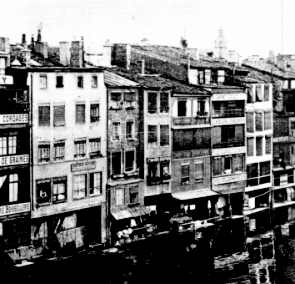| Back
to:
Phase 1 - The preparations before the Battle The history of Verdun To the people of France Verdun was of great symbolic meaning. Of old the small city had played an important part in the defence of the hinterland, with its strategic location at the river Meuse. Attilla the Hun never had been able tot conquer the city. At the dividing of the dominions of Charles the Great in 843, Verdun became a part of the (German) Holy Roman Kingdom. At the Peace of Munich in 1648 Verdun was permanently allocated to France.
Verdun played an important part in the lines
of defence, which were built in the period after the French-Prussian war
of 1870. Along the French eastern-border a strong zone of forts had been
built between Verdun and Toul and between Epinal and Belfort, as a
protection against a German threat. Verdun guarded the Northern entrance
to the Champagne-plain and with that the entrance to Paris. |
